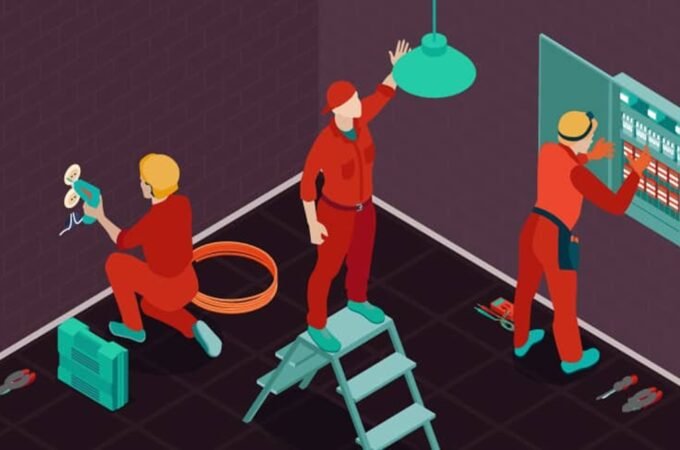
The Landscape Project Process: From Identifying Needs to Successful Completion
Landscaping projects have the power to metamorphose outdoor spaces, turning them into areas that are not just visually appealing but also functional and environmentally conscious. Whether it’s a small residential garden or a vast commercial development, a meticulously executed landscaping project has the potential to augment the attractiveness and the financial value of a property. Nevertheless, the journey of planning and carrying out such projects encompasses several pivotal steps.
In this comprehensive guide, we will delve into the landscape project process, covering everything from initial customer site visits to evaluating the results. We’ll also address the challenges faced in each phase and provide valuable insights based on real-world experience.
Table of Contents
Toggle1. Identifying the Need with a Customer Site Visit
Prior to commencing any landscaping project, it is of paramount importance to ascertain the requirements and aspirations of the client. This is accomplished through a site visit with the customer, during which the landscape designer or contractor evaluates the existing condition of the property and engages in a conversation with the client to understand their preferences. In this phase, the primary objective is to define the project’s extent, design style, and financial considerations.
A successful customer site visit involves:
- Careful inspection of the site’s existing features.
- A detailed discussion with the client regarding their vision.
- Providing expert advice on design possibilities and limitations.
Expert Tip: Always take notes and photographs during the site visit to reference later during the planning phase.
2. Planning a Timeline
Once the client’s requirements are clearly defined, the subsequent phase involves the establishment of a project timeline. Crafting a well-organized timeline holds significant importance in steering the project in the right direction and ensuring that all deadlines are duly met. Factors like the project’s scale, design intricacy, and prevailing weather conditions should all be considered when formulating the timeline.
Key elements in planning a timeline:
- Setting clear milestones and deadlines.
- Allocating time for design, permitting, and construction phases.
- Factoring in potential delays and contingencies.
3. Planning Resources
Resource planning constitutes a pivotal aspect of the landscape project process. It encompasses the identification and allocation of essential resources, encompassing labor, equipment, and materials. The overarching objective is to guarantee the timely availability of all necessary resources, thereby averting potential setbacks and cost overruns.
Resource planning includes:
- Assessing the skills and availability of the workforce.
- Procuring necessary equipment and machinery.
- Determining the quantity and quality of materials required.
4. Purchase Materials (Supply Chain)
Acquiring materials is a significant aspect of resource planning. You must establish a reliable supply chain for the required materials to avoid disruptions during the construction phase. Materials may include plants, hardscaping elements, soil, and more.
Key considerations when purchasing materials:
- Sourcing materials from reputable suppliers.
- Ensuring timely delivery of materials to the project site.
- Keeping an inventory to monitor material usage and prevent shortages.
5. Create Phase Payment Requirements
In numerous landscape projects, payments are structured in phases, with each phase aligning with a distinct project stage. The establishment of transparent and equitable payment terms holds significant importance in nurturing a positive working rapport with the client and ensuring financial stability throughout the project’s duration.
Creating phase payment requirements involves:
- Outlining the payment schedule in the project contract.
- Defining the criteria for releasing payments at each phase.
- Ensuring transparency and accountability in financial transactions.
6. Generate a Contract
The project contract is a legally binding document that outlines the terms and conditions of the landscaping project. It protects both the client and the contractor by clearly defining responsibilities, timelines, costs, and expectations. A well-drafted contract is fundamental to a successful project.
Elements of a comprehensive project contract:
- Project scope and specifications.
- Payment terms and schedule.
- Warranty and maintenance provisions.
- Dispute resolution procedures.
Expert Tip: Always have a legal professional review the contract to ensure it complies with local regulations.
7. Hire or Schedule Crews
With the project’s timeline established and resources in place, it’s time to assemble the workforce. Whether you’re hiring a dedicated crew or subcontracting different tasks, the key is to ensure that skilled and reliable individuals are involved.
When hiring or scheduling crews, consider:
- The availability of experienced landscapers and laborers.
- Coordination with subcontractors, if necessary.
- Training and safety protocols to maintain a secure work environment.
8. Evaluate Actual vs. Planned Progress
As the project progresses, it’s essential to monitor its actual status in comparison to the original plan. This involves ongoing assessment and adjustments to ensure that the project remains on track.
Evaluating actual vs. planned progress includes:
- Regular site inspections to confirm quality and adherence to design.
- Comparing the timeline to the actual project status.
- Making necessary changes to address any deviations from the original plan.
9. Challenges in Landscape Projects
Landscape projects are not without challenges. Throughout the process, you may encounter issues like adverse weather conditions, unexpected site complications, or changes in the client’s preferences. Addressing these challenges requires adaptability and effective communication with both the client and the project team.
Conclusion:
The landscape project process is a complex but rewarding journey that begins with a customer site visit and culminates in a transformed outdoor space. By following these steps, addressing potential challenges, and maintaining open communication with clients, you can successfully complete landscape projects that leave a lasting impact.
Frequently Asked Questions
Q: How do I determine the right plants for a landscape project?
A: Choosing the right plants involves considering climate, soil conditions, and the client’s preferences. Consult with a horticulturist or landscape designer for expert advice.
Q: What permits are required for landscape projects?
A: The permits needed vary by location and project scope. Consult local authorities and zoning regulations to ensure compliance.
Q: How can I ensure the project stays within the budget?
A: Regularly monitor expenses and make adjustments as needed. Transparent communication with the client about budget concerns is essential.
Q: What is the importance of sustainable landscaping practices?
A: Sustainable landscaping helps conserve resources, reduce maintenance costs, and minimize environmental impact. It’s an eco-friendly choice that benefits both the client and the environment.
Q: What should be included in a project warranty?
A: A project warranty typically covers plant survival, workmanship, and materials. The specifics should be outlined in the project contract.
Q: What is the role of a landscape architect in the project?
A: A landscape architect designs the project, considering aesthetics, functionality, and sustainability, and ensures that the project aligns with local regulations.
Mark Ligon is the Marketing Manager at a leading e-commerce store in plumbing supply. Mark focus is on DIY projects and providing creative and practical advice to individuals looking to complete DIY projects of their own





